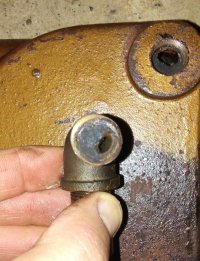Frank Langer
1984 Ericson 30+, Nanaimo, BC
Hi,
I have not removed any part of the exhaust system in 16 years (eg, riser, muffler, etc), but I get good strong exhaust water at the transom. If parts of the exhaust are getting carbon deposits, would I still have strong exhaust water flow? I don't want to dismantle parts, especially these, unnecessarily.
Thanks for any opinions.
Frank
I have not removed any part of the exhaust system in 16 years (eg, riser, muffler, etc), but I get good strong exhaust water at the transom. If parts of the exhaust are getting carbon deposits, would I still have strong exhaust water flow? I don't want to dismantle parts, especially these, unnecessarily.
Thanks for any opinions.
Frank

